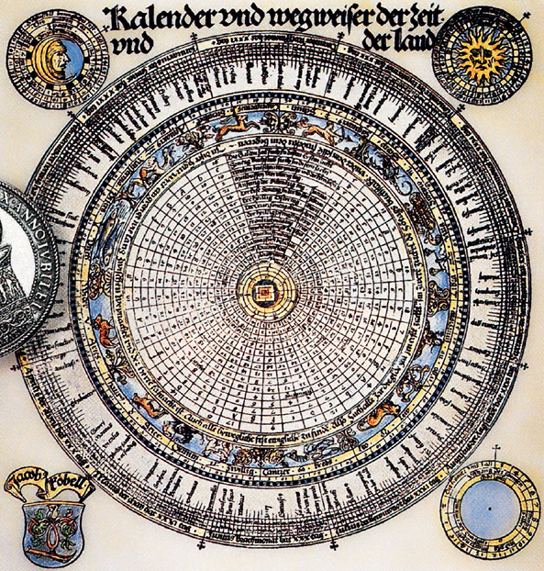1582
Gregorian Calendar
Most of us think of a year as 12 months, or 365 days, and we don’t give it much more thought. Once every four years, though, we’re reminded that it’s not quite true, that one trip around the Sun is more like 365.25 days, which is why the Julian Calendar reform of 45 BCE mandated adding February 29 as a leap day every fourth year to keep Caesar’s calendar system synced with the Earth’s motion around the Sun.
The Julian calendar’s assumed vernal-equinox-to-vernal-equinox year of 365.25 days turned out to be too long by about 11 minutes per year (the actual value is about 365.24237 days). This didn’t matter much during the Roman Empire, but 1,500 years later, the calendar date had drifted more than 10 days from the same solar, or seasonal, date that it had been given back in Caesar’s time. The spring equinox as determined by astronomers was occurring around March 11 instead of March 21. This meant that the feast of Easter was drifting back into winter, which the Catholic Church didn’t like. A fix was needed. Julius Caesar’s 45 BCE calendar reform needed a reform.
The Roman Catholic Council of Trent decided to modify Caesar’s calendar so that instead of one out of every four (0.25) years being a leap year, it would now be 97 out of every 400 (0.2425) years, established by designating only every century year divisible by 400 as a leap year. So the years 1700, 1800, and 1900 were not leap years, but the year 2000 was. They still had to fix the 10-day drift, so the Julian calendar was ended on October 4, 1582, and the new “Gregorian calendar” plan was put in place by Pope Gregory XIII on the next day, which was decreed to be October 15, 1582.
The modern Gregorian calendar, in wide global use today, stays true to the Earth’s orbital position to better than one day out of every 7,600 years—good enough for the foreseeable future. However, the Earth’s spin is slowing down slightly over time because of tidal friction, and so the length of the day is slowly getting longer. Thus, since 1972, the International Earth Rotation and Reference Systems Service (there really is such a service!) has occasionally added official leap seconds to the world’s atomic clocks, to keep them in sync with the slowly changing spin, and thus the slowly changing apparent solar time, of our planet.
SEE ALSO Julian Calendar (45 BCE), Finding Easter (c. 700), De Sphaera (c. 1230).
A depiction of the Gregorian calendar, adopted in 1582 by Pope Gregory XIII to correct the Julian calendar, and still widely in use by much of the world today. The German inscription at the top of this calendar translates to “calendar and signpost the time and the land.”
